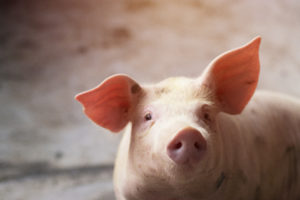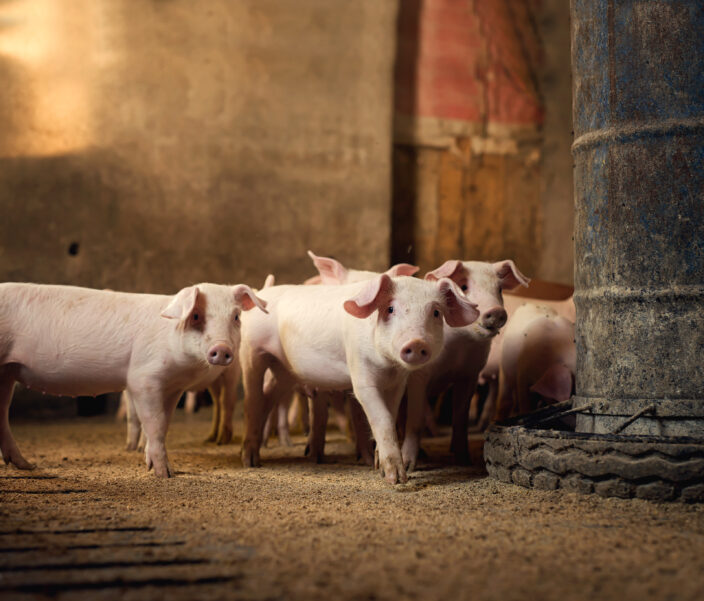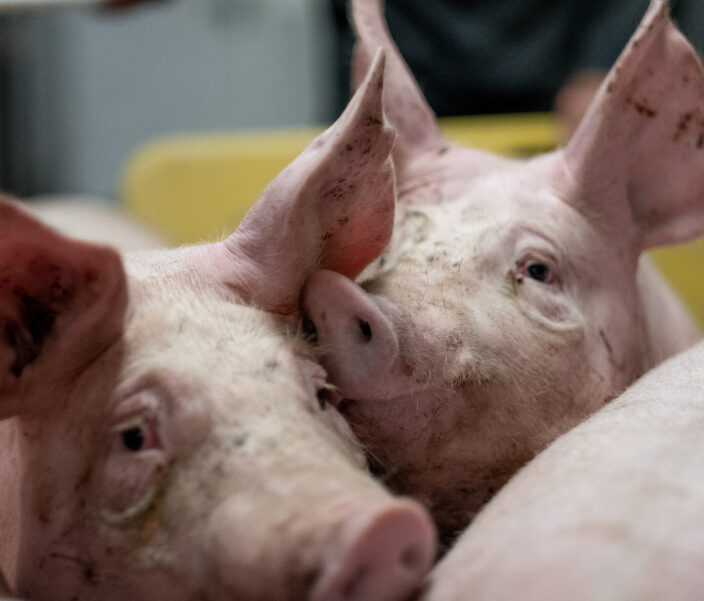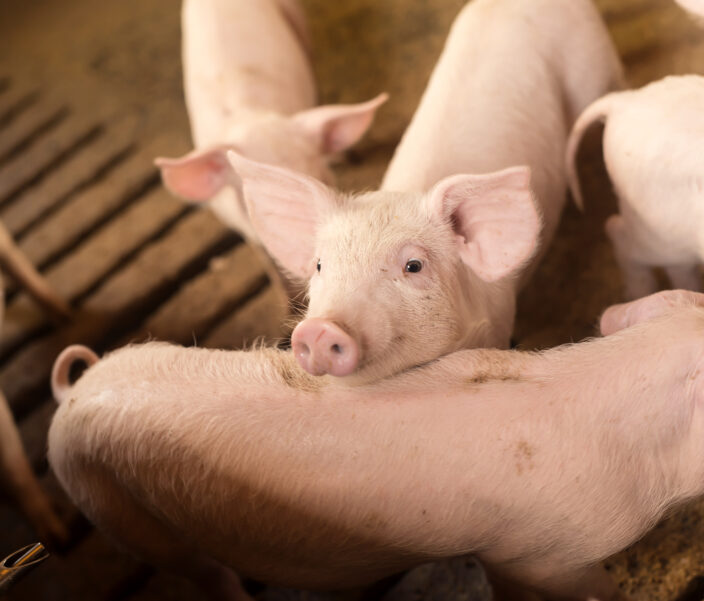Good farm management practices and high-quality feed formulations are the most important points then addressing the stresses around weaning. However, realistically, we cannot always adapt existing farm practices to reduce stressors. Hence, there will always be a need for a well-balanced functional feed ingredients approach to improving the robustness of piglets to face the challenges around weaning.
Piglets face multiple stressors simultaneously around weaning: limited colostrum availability, a still-developing gut microbiome, risk of toxins, exposure to pathogens, and a prevalence of free radicals to name a few. On top of this, newly weaned piglets have an immature immune system. All these stressors could potentially have a huge impact on the health and performance of the piglets. To help them cope with these challenges, a balanced diet fortified with functional feed ingredients, combined with on-farm management practices, can provide the best start for the herd.
PROBLEM: Limited colostrum availability
Around weaning, enforcing the immune status of piglets is one of the most important ways to ensure a smooth transition. At the age of 21-26 days, piglets are not mature enough to build up their immune system and react to upcoming challenges, like E. coli. At this age, there is often a gap between passive and active immunity (Figure 1). Passive immunity received via maternal colostrum is of utmost importance. However, due to the genetically increased number of liveborn piglets, colostrum becomes more and more limited. The same amount of colostrum is simply divided over more piglets.
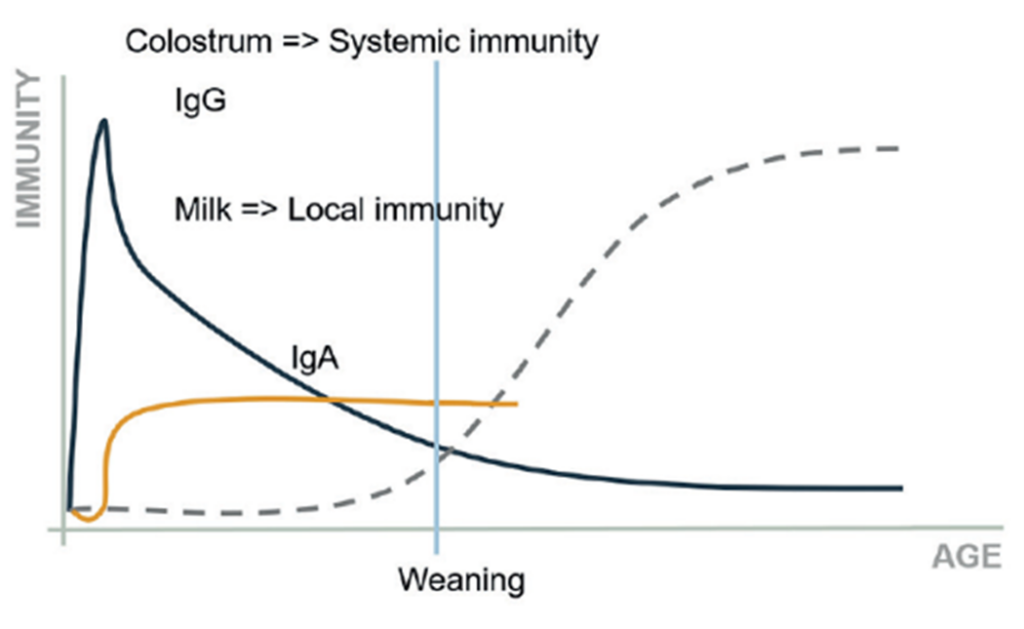
SOLUTION:
Rearing robust piglets starts in the womb even before birth. By providing targeted ingredients to the gestation and lactation diets, the sow’s health status is improved. This leads to a higher colostrum quality with higher concentrations of immunoglobulins available. These advantages are often reflected in lower pre-weaning mortality and the higher immune status will also contribute to the overall post-weaning robustness, resulting in more vital and productive piglets. Simply said, when piglets have a higher immune status they can better defend themselves for the upcoming challenges post-weaning.
PROBLEM: A weak gut
Three to four weeks… That is all the time there is to prepare the intestine for the biggest challenge in the life of a modern domesticated pig. Focusing on intestinal health means finding an equilibrium between a balanced microflora, a strong intestinal barrier, and a high intestinal surface with long villi to optimize feed digestion. A balanced microflora can help protect against over colonization of gram-negative bacteria. A strong intestinal barrier will defend piglets from toxins like endotoxins, while long villi ensure ideal nutrient uptake, supporting health and growth.
SOLUTION:
Weaning a piglet automatically leads to a nutritional shift from a milk-based diet to a cereal-based diet. This shift requires the intestine to adapt tremendously fast. By feeding creep feed before weaning, the intestine can be trained to better cope with this sudden change. This is where remarkable functional feed ingredients can play their role. By adding a prebiotic, like a galacto-oligosaccharide—to the creep feed and weaning diet—the immature intestine is better equipped for this transition. They mimic the role of the natural prebiotic components in sow milk. Feeding scientifically proven pre-biotics will improve the microbiome composition, strengthen the gut barrier and improve intestinal morphology.
PROBLEM: Incoming pathogens
When piglets are weaned they enter a completely new environment, the nursery barn. Next to this, litters are mixed according to weight, sex, and pen size. New environments and new animals in the pens lead to more stress. The piglets also encounter new bacteria, both harmful and beneficial, as well as exposure to viruses.
SOLUTION:
A specific combination of medium-chain fatty acids (MCFAs) can function as a gatekeeper of the intestine. Research has found that utilizing a concentrated form of MCFAs can support protection against incoming pathogens by killing gram-negative bacteria before they can cause damage to the intestinal cells. In the end, this reduced pathogenic load supports piglets in a smooth weaning transition.
PROBLEM: Endotoxins
During the weaning period, piglets are exposed to high amounts of gram-negative bacteria like E. coli. The innate endogenous immune system of the piglets will work to destroy many of these pathogens. Through this destruction process, bacterial cell debris can be produced. Some of this debris (i.e., endotoxins) is toxic for animals. When these endotoxins are released, they bind to specific receptors in the intestine (TLR-receptors) and cause local inflammation and fever. This inflammation requires energy and takes away from potential weight gain opportunities.
SOLUTION:
The best way to counteract endotoxins, and thereby prohibit the inflammatory reaction that goes along with them, is to scavenge them before they do any harm. By reducing the detrimental impact of endotoxins, animals will be healthier and more productive. Recent findings, both in vitro and in vivo, demonstrate how specifically processed clays (organoclays) can provide a solution to daily toxin issues. Concerning endotoxins, this binding solution supports the needs of the animals around weaning. These scientifically proven endotoxin binding capabilities are a clear example of how nutrition can impact gut health and how nutritionists can select diets to care for their animals, moving them forward in a healthy way.
PROBLEM: Prevalence of free radicals
When an animal experiences stress—due to handling, environment, or toxins—an increased amount of oxidative stress is imposed on the gut, resulting in metabolites known as free radicals being produced. These will induce a damaging chain reaction, causing destruction to nucleic acids, proteins, and lipids. As these components are the basic molecules for all metabolic processes, free radicals directly affect the viability of cells, animal health, and performance. In addition to cellular metabolic issues, they will attack the intestinal barrier and cause leakage of the intestinal barrier. The intestinal barrier is formed by a layer of epithelial cells covered with mucus (Figure 2). Tight junction proteins form a physical barrier between two adjacent epithelial cells to prevent paracellular absorption of undesired substances such as toxins or pathogens. When exposed to free radicals, oxidative stress harms this intestinal barrier function by modifying the cellular proteins; this is commonly referred to as ‘leaky gut’.

SOLUTION:
Free radicals in a piglet’s intestine can be compared to mines in a war zone; they have to be neutralized before they do damage. Nature created a natural defense mechanism to neutralize free radical via natural anti-oxidants like Vit E and Vit C. However the reserve of these anti-oxidants are limited in young animals and due to the high-stress levels around weaning, the number of free radicals in the intestine is high. Adding additional anti-oxidants via a well-balanced polyphenol mixture will scavenge these free radicals and neutralize them. This way the intestinal barrier will continue to be a safeguard, creating a healthier intestine with less diarrhea as a consequence.
All the above clearly shows that—next to good managerial and nutritional practices—there is an important role for functional feed ingredients in a piglet and sow’s diet. Especially as we move toward a zinc-free environment. Depending on the local situation and the existing practices, the focus of this antibiotic and zinc-free approach should be adapted. It can be considered as a toolbox with every different functional feed ingredient being a tool that may be used (or not) depending on the specific situation. It is, however, advised that discussion between nutritionists, veterinarians, and farm managers occurs to reach optimal results. When combining the insights of all the specialists together, it will be possible to reach the mutual goal of reducing the use of antibiotics in piglets.
Contact your agrimprove expert
Do you have a question or want personalized advice? Your Agrimprove expert is willing to help. Reach out directly or request to be contacted at your convenience.
This might also interest you
Ready for improvement? Try one of our suggested solutions with a proven added value.
